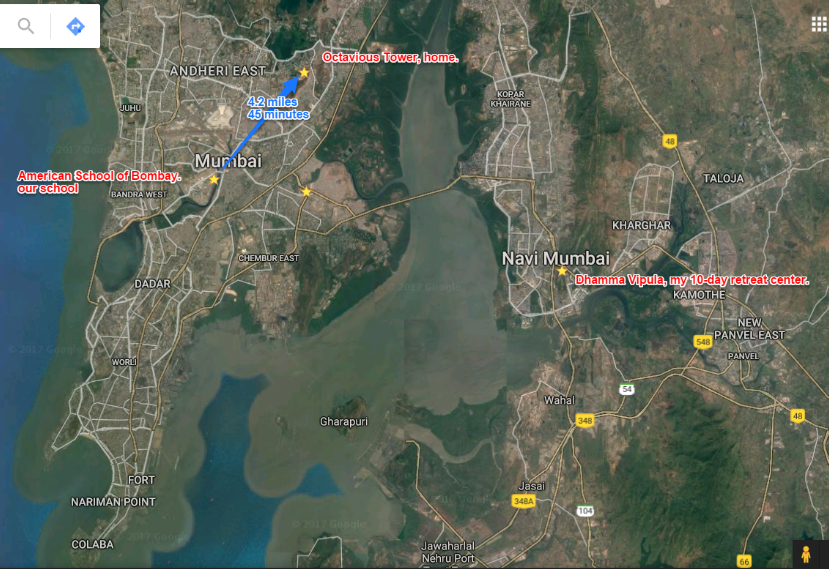
Notes on my India Trip, March 6 – April 4, 2017

Here is a rough and ready overview.
Pick up at home at 6 am.
Arrive Mumbai, about 11.30 pm the next day, pick up at airport about 12.30 am.
30h total travel time. Add 12.5 hrs to get Mumbai time. About 43 hours by the calendar/clock.
Flight times on the return were 9 hr Mumbai-
Details here.
It's a nice airport:

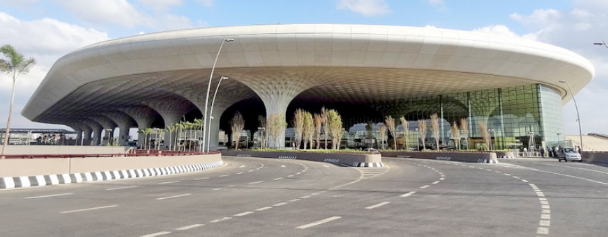
Inside:
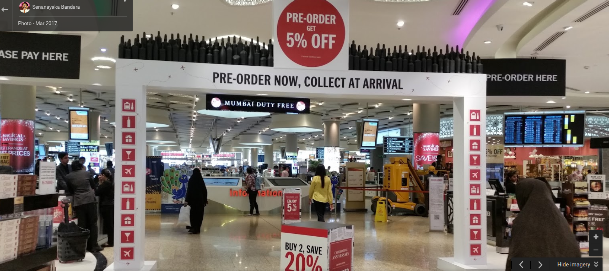


But things are inevitably much different outside:
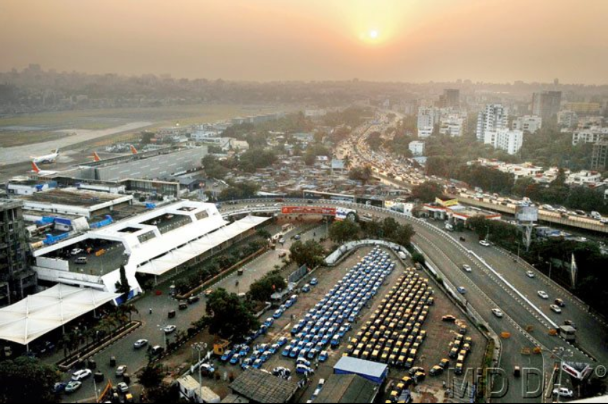
This is sunset in Mumbai.
But really, at night when Eric picked me up -
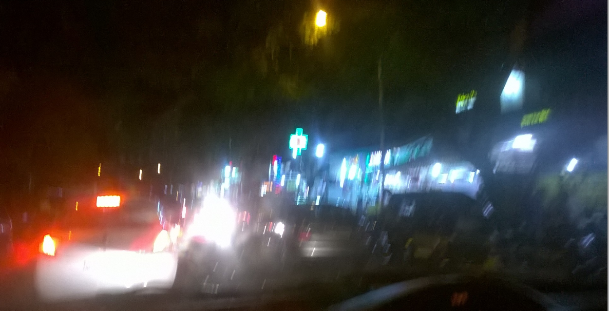
Where my trip places were in Mumbai:
(In fact I never visited the middle-
Where we went on their spring break. Click here to go to the webpage itself. The departure date got moved up to Friday, March 10 and the stay continued until Saturday, March 18. We flew from Mumbai to New Delhi and stayed overnight in a decent hotel (no heat in my room, a portent), then flew out the next morning to the tiny airport in a town called Pantnagar. It has only one flight daily, I heard, which would explain our stay in the hotel.
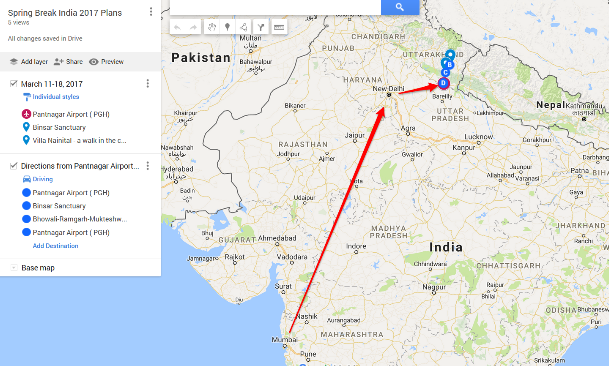
This trip was highly demanding and eventful. I hope to give it a separate treatment later. Now I'll note that we got a car and driver to take us as far as Binsar Sanctuary, which required six hours driving into rain and even some snow on winding, narrow roads (but paved). This photo (below) is on the way down (no rain or snow) but is my best shot for showing the more or less terrifying road conditions.

Another view of this one-
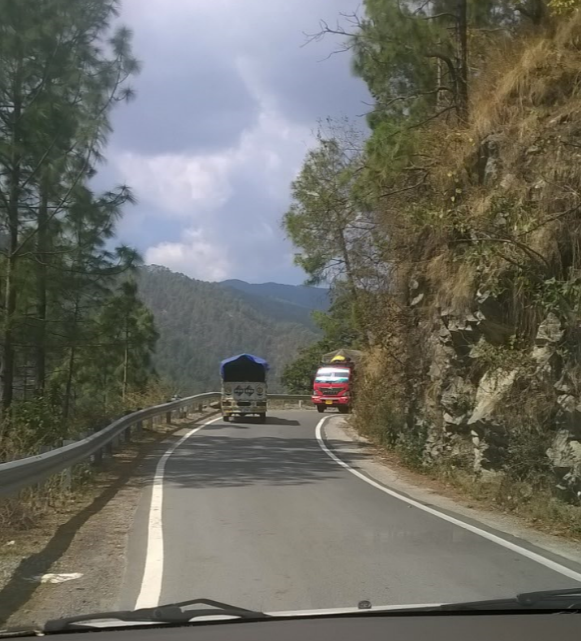
Then (at the end of the long drive) the Grand Oak Manor people sent their Jeep down to get us up the rest of the way on a dirt road, which came out here -

A wonderful place, more later perhaps. Too bad there was essentially no heat. This was the view through the porch and off to the right the next morning, which was clear:

That's Mount Trisul (Trident) in the National Park to the north of us 66 miles. Over 21,000 feet.
For a short video of Languar monkeys looking for food (lizards, we thought) on the Manor’s abandoned horse stable –
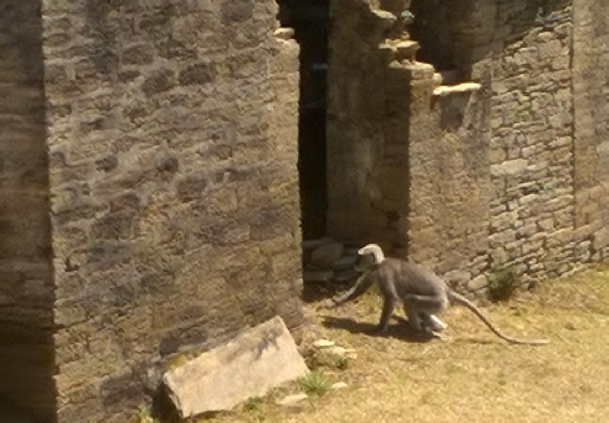
click here for Katie’s video on YouTube.
After three nights at Grand Oak Manor we are off on another long car ride to reach Villa Nainital. Well, to reach what is called Jilling Terraces on Google:
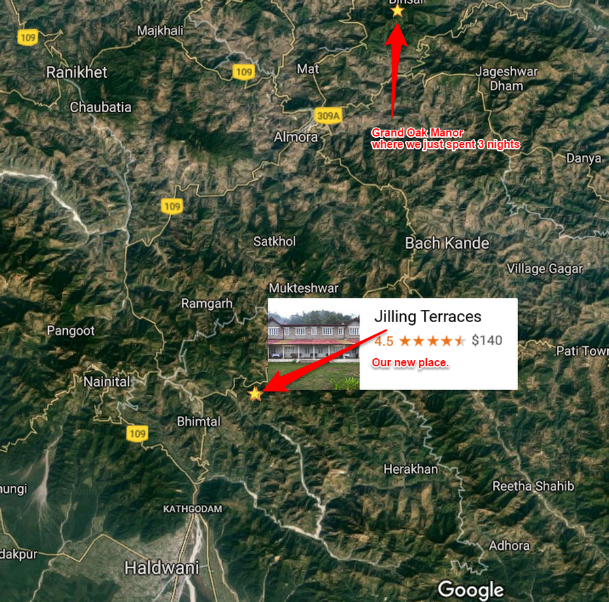
Here’s a view of the small city of Almora (see yellow 309A on the map above) from the car on the way down:
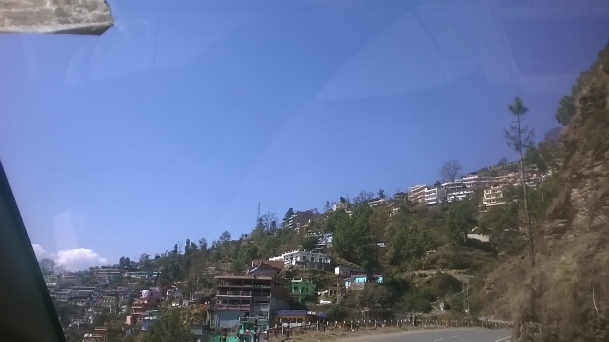
Jilling Terraces can only be reached on foot, or horse (some guests needed that). We hiked 3 km up a pretty good grade. It took us an hour and 10 minutes. Some pix:
Starting out -
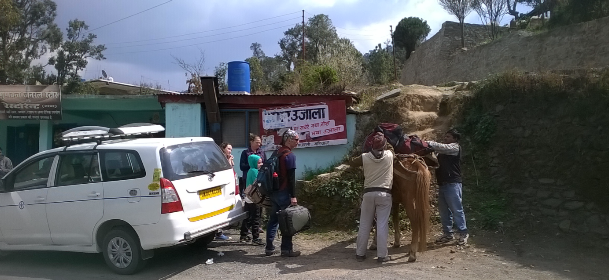
From my point of view:

From their point of view:
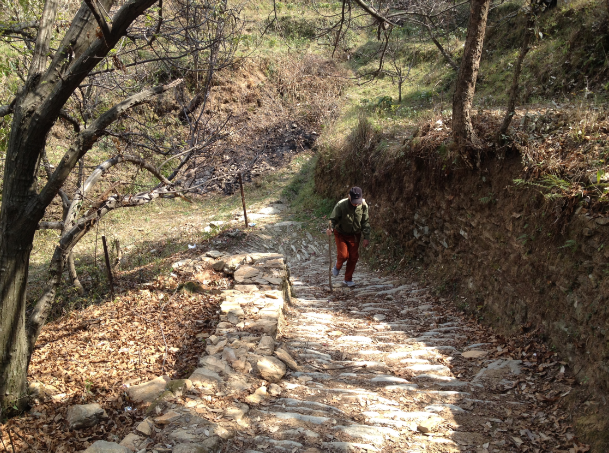
It was worth the hike. That's Daleep, the main man at the place.

Breakfast, cold, windows open.
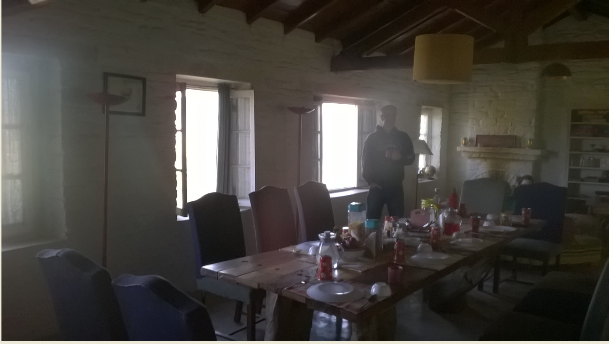
Reading in the morning (adjusting color to show the mountains -
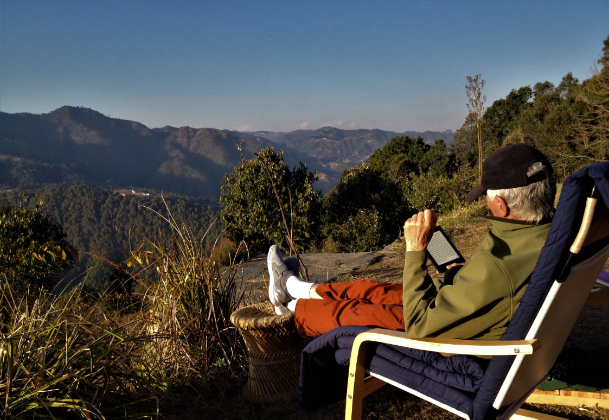
Kyle looking out from a walk up behind us. It's 3,000 feet down to the river whose name I still haven't found.
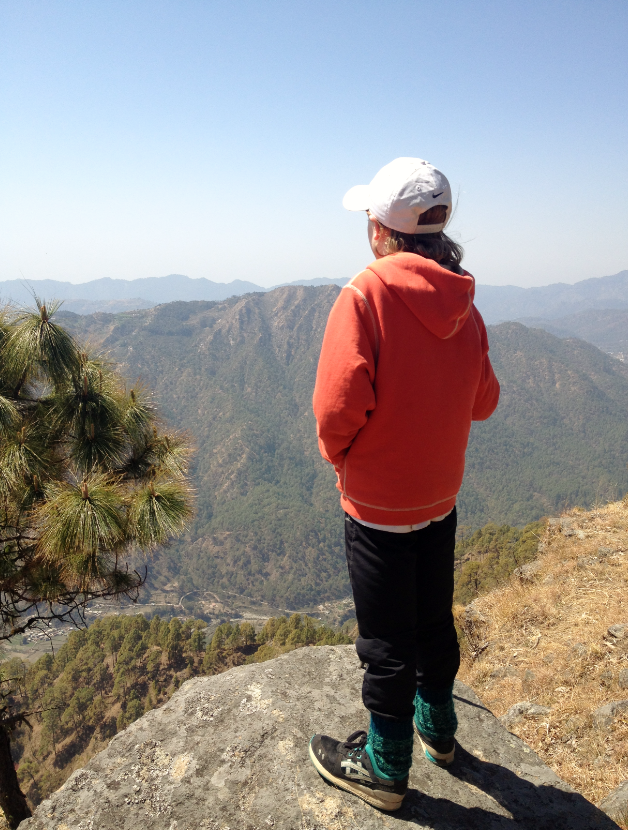
On the return from Jilling Terraces via the Pantnagar airport we stayed in a comfortable international-
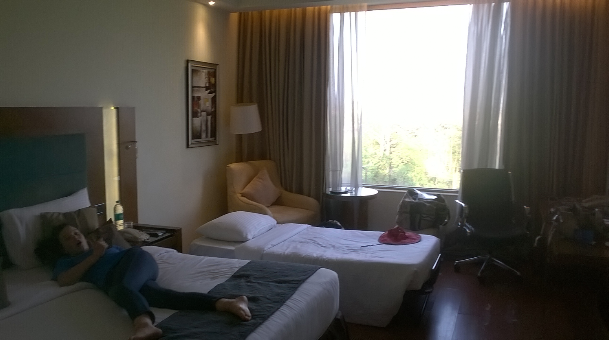
Upon return it was time for me to continue using the very good services of Margaret and Eric's housekeeper and driver, Violet and Raju. I had already gone around the Powai area shopping with Violet and downtown to visit temples and other sights with Raju's help.
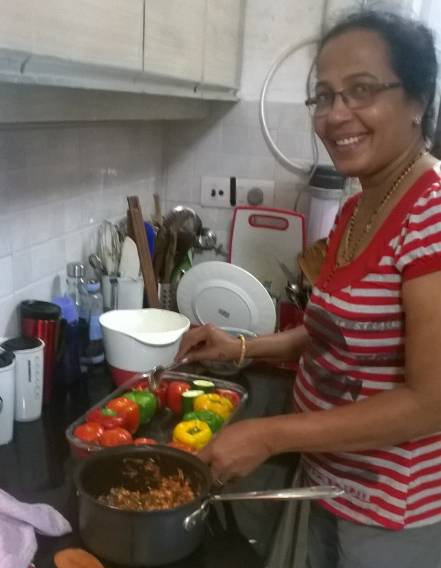

So downtown Mumbai. First the Dabbawalas (Wikilink) –
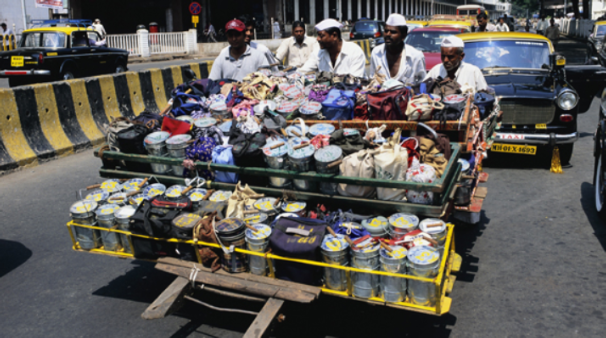
My Dabbawala find. (Above photo from the web.) Note lunch canisters on other side of bike and white hat.
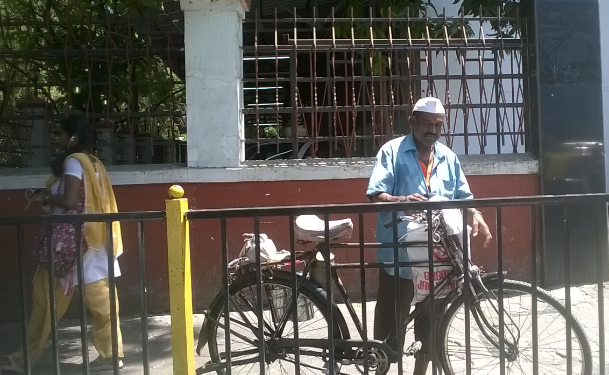
Dhobi Ghat – the world's largest outdoor laundry (link to web story)
Ask me about my effort to find a place to urinate down there. Good 360 photo.)

My view from below, having walked under the bridge and behind me. See the 360 photo above:
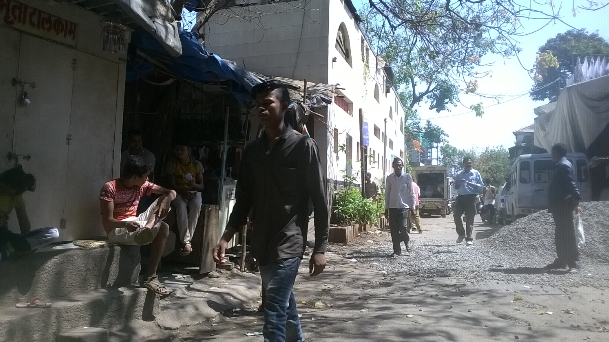
Visited the Ghandi Museum in a home that was his HQ in Mumbai.
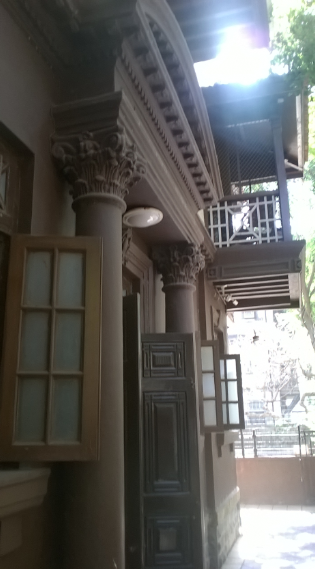
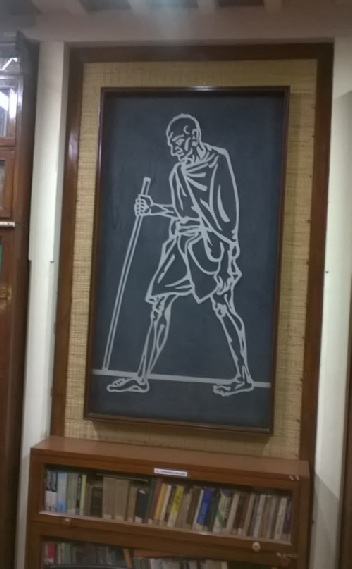
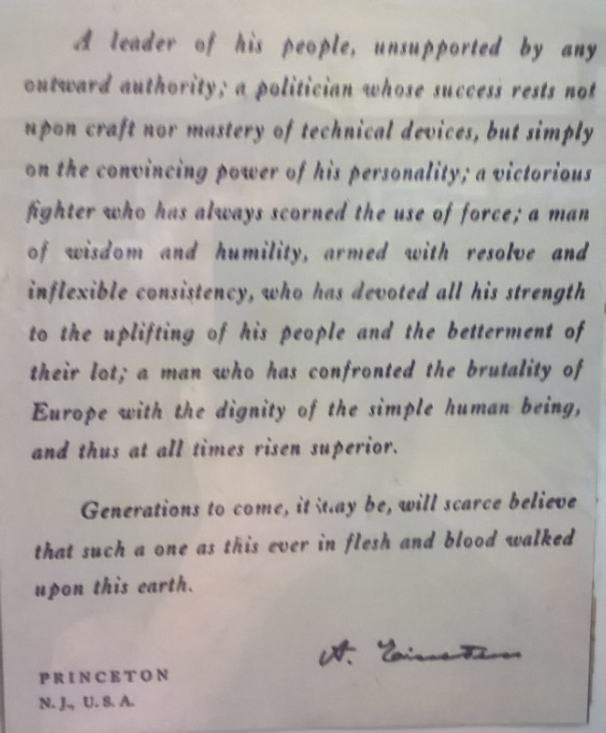
Temple Babul Nath (good pix here) (A Hindu woman doing her worship as I walked in, took me all the way through her many, many offerings on this Darshan of hers -
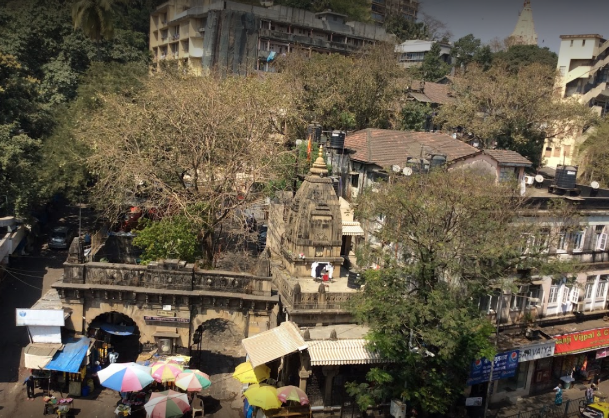
My view:
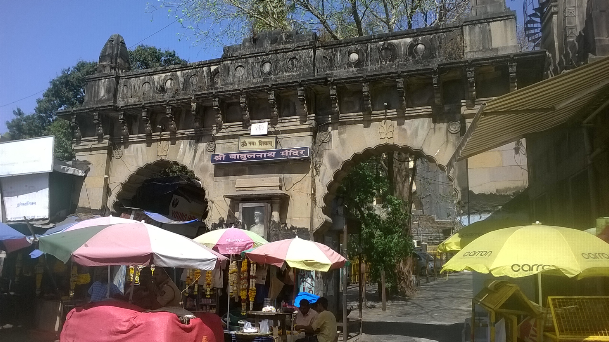
Walking up, many idols along the way. This photo is from the internet.

The Hindu woman,Shirley, who took me under her care is in the pink sweater to the right on this picture. She carried flowers, petals and some food items to present to the idols.
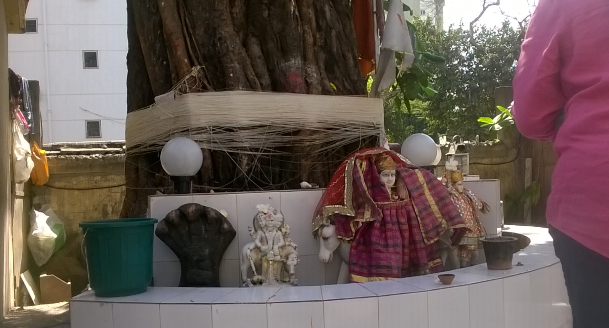
I don’t know the idols in my picture, but here, an internet photo, is Ganesh, seemingly the most popular god in Mumbai. Notice the blue eyes. Here is the story of how he got his head. It doesn’t make clear why the eyes are blue. It does say why he is the most honored, the first god among the gods.
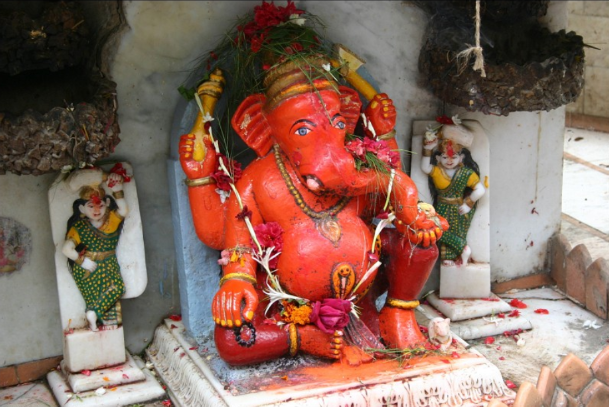
I was not permitted to take pictures farther up the temple walk, and certainly not at the most important idol, the Shiva lignam. In this photo from the internet, people not directly making offerings are just looking about or perhaps praying. That’s how it was for us. Shirley also poured water over the idol. She asked me if I had had a shower that morning, and when I said, No, but the night before, she told me I was not pure, then, and could not touch the idols. She watched me carefully in this regard on the whole journey.
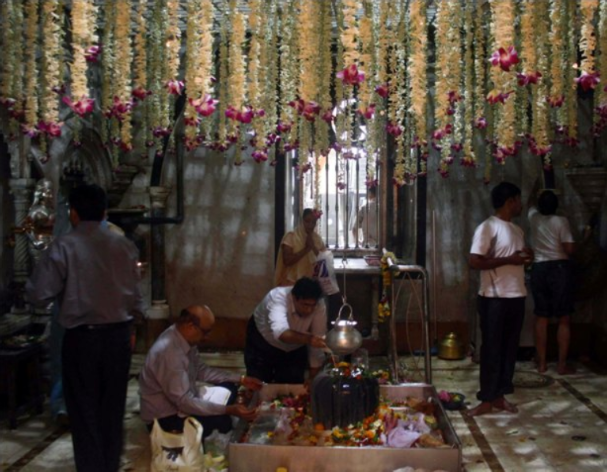
I visited three other temples, one an Islamic shrine. A real highlight of the trip for me.
Also I visited the Chhatrapati Shivaji Maharaj Vastu Sangrahalaya (CSMVS)
formerly Prince of Wales Museum of Western India. Raju seemed to feel I ought. It was of minor interest to me. I tried to get a selfie with the reclining Buddha in the front of the structure now, but with my old phone; that didn’t work too well:
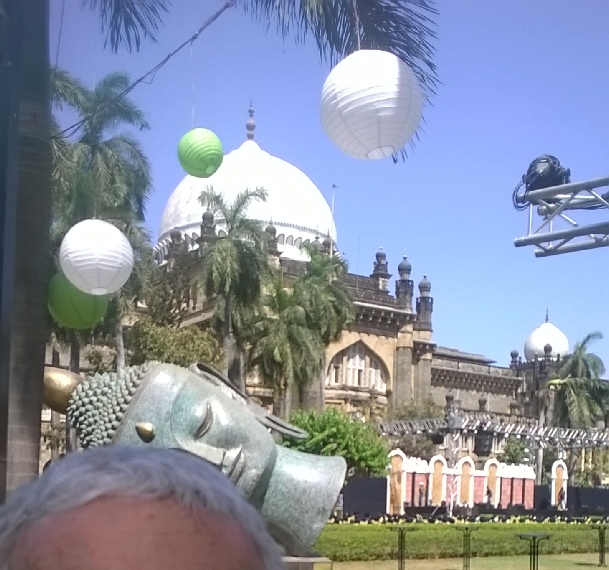
Then shopping with Violet in Powai. The walk down:
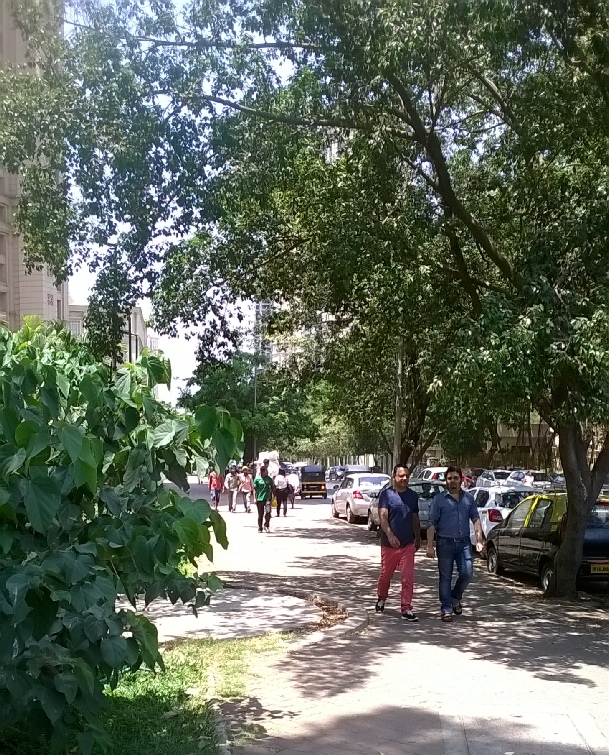
We get there, outside:
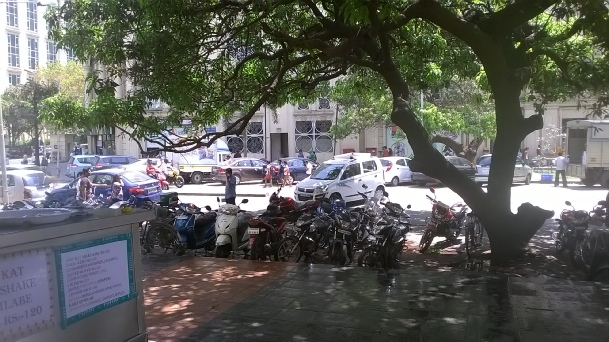
Inside on the way out. The woman in shorts is an anomaly:

Looking back up the slight hill toward Octavius Tower from whence we came – Octavius is on the left hidden by the tree.
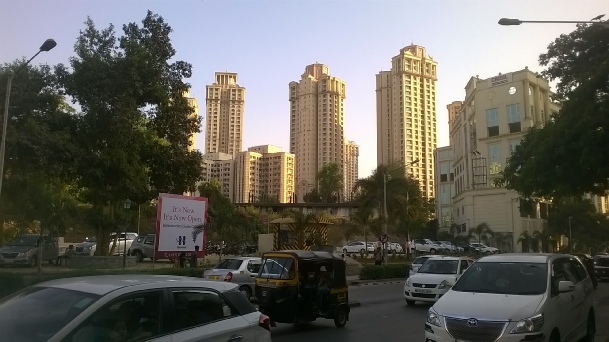
Along the way there were so often dogs, sad, undernourished dogs, mostly just lying on the sidewalks:
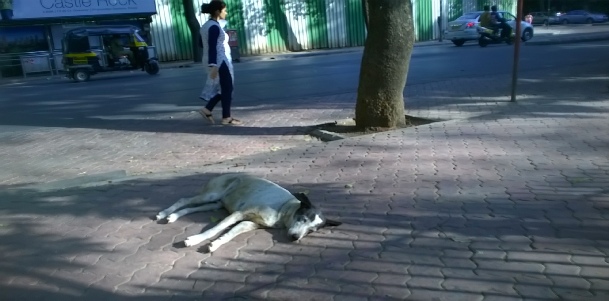
The first native I spoke with on my first solo walk down from the Tower was this lady feeding the dogs. She had given them names. She said, My husband works, so I can do this. I just love dogs.
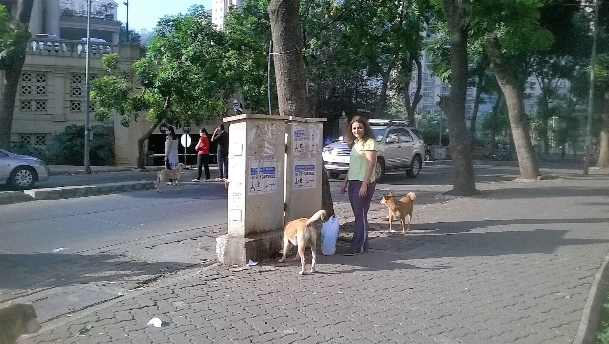
There was a man who fed what seemed like the same dogs in the late afternoon.
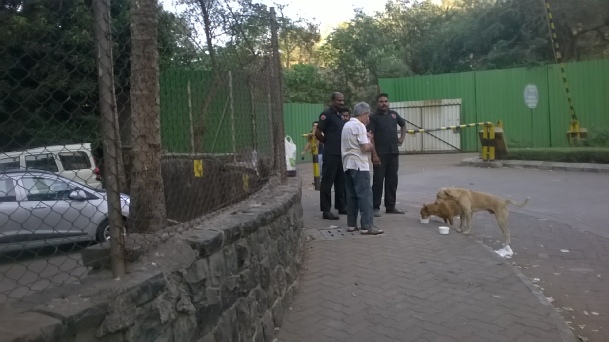
The camera is looking more or less 180 degrees the other way in that photo, across another street.
My 28-
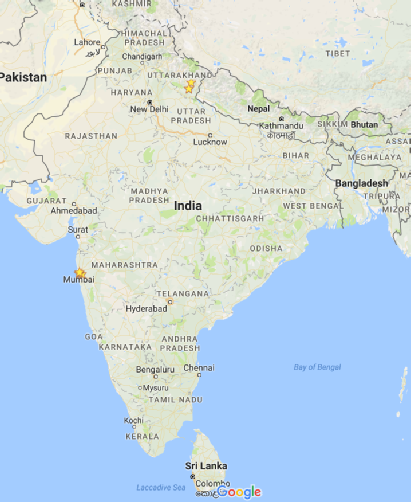
The third part was a more mental than physical place, a 10-
It is one of many interesting aspects of the Goenka approach that the 10-
If you are interested in some of the details of their take on meditation, on what they see as the closest thing to what the Buddha actually taught that one can find today, you might take a look at this statement by Goenka himself (Guruji Goenka, the students at my retreat called him when we could speak with each other on the tenth day.) In that statement Guruji briefly surveys some of the major alternative modes of meditation before explaining why his approach (in the tradition of Sayagyi U Ba Khin of Burma, where he grew up) is to be preferred.
Now while I believe that my experience in this retreat was easily one of the most spiritually meaningful of my life, that was not because of the Vipassana meditation as taught. It was rather, because in most of this long period I had nowhere to turn to escape or hide from or dodge my own thinking. When I came to a hard place, I had to go on. I had to deal with it. For there was no public and no private TV, radio, computer, cell phone or the like. We had given up paper and writing materials as well as any physical reading materials along with our passports when we registered. We were maintaining what is called “noble silence” – no speaking with one another and eyes averted in the hallways or walking places. No touching. No gestures. No diversions apart from quiet and still nobly silent mealtimes and the silent meditation itself or the one instruction period each day as we sat in the meditation hall or the one dhamma lecture at the end of the day’s practice. We were up at 4 am and turned back into our cells for sleep at about 9.30 pm.
The ten or so hours of meditation daily were either under instruction (about thirty minutes) or just quiet and to be used for practice in the instructed manner. From my perspective as a modestly instructed and practicing mindfulness meditator, the particular Goenka practice appeared as some fierce form of Buddhist bootcamp. I was not ready for this, and my response to the shock of it was to give it my best shot for awhile, but then to use the silent time sitting to what I construed as my best advantage, and that was a continuation of my self-
Of course, if I had stayed with the fierce program that would not have happened. Goenka vipassana meditation is strictly designed to empty the mind by filling it with an unwavering attention to the physical sensations of the body. One discovers this way that any special sensation (like an itch or a painful stress somewhere) passes away from awareness as one moves one’s attention through all the various parts of the body in the instructed manner. See the statement by Goenka I mentioned back three paragraphs for the larger spiritual reasons for this. I think they must be very well founded. This is a program that attracts many repeat trips and its success in many psychological ways is attested by scientific studies and persuasive anecdotes (like the use of the program in some prisons in India).
However, at the time I entered the program I was, I would say, somewhere else. See my commented version of the referenced Goenka paper here for some more detail. So I did what I did with this time, and it was very meaningful to me.
So let’s go back to picture mode. Here is an outside overview of the building that about 50 men and 50 women shared in segregated and modestly dressed fashion. I take these from the website above linked. At the present time, construction is nearing completion on quite a tall golden stupa located on the far side of this building, which is situated on a high hill (240 feet) above New Mumbai. You can see about as much of the city as we could normally see on the left. The smog hides the ocean, which is at most two miles distant.

The men’s mess hall adjoined the roof top on the left, and we could walk there at any time we were otherwise free, typically after meals.
There was an inner courtyard where we (the men again) could also walk. In this photo, the men’s cells are on the right and the women’s, hidden behind the green sheets drawn down, on the left. The women had no open-

The men were on the left side of the Dhamma Hall:

As we sat in this hall some ten hours a day, if we used it all our sitting time and spent none in our rooms, many people needed and were provided with back rests. Quite a few decided to use chairs, which were placed along the sides of the hall and in the rear. No one sat on the stage, which seems to be reserved for Guruji Goenka himself, now deceased. The men had one teacher, who sat pretty much where the solid brown table is, and the women had two, who sat over on the right. All just behind the blue tarp, which is where at certain times the first-
Merely sitting still this long, and on the floor, was quite a challenge for me and apparently for most of the others. I was the only old white-
In fact the ten days were an ordeal for especially the younger people, both the Westerners and even some of the Indians. After about four days they began to break noble silence in quick moments. Some would stand at low walls or railings side by side and talk quietly. By some later day a few of them had managed to find a double cell to use for themselves after hours. This did not disturb people and was, in fact, right next to my own cell but a separating bathroom kept me from hearing anything in the night.
To be noted, however, is that many of the young people (as I found out on day ten, when we could speak after 9 am – and pickup-
Much more to be said, but I will go now to some photos I got on the last day when we got our cell phones back.
The Indian young people with, on the left, a lawyer trying to get his mid-
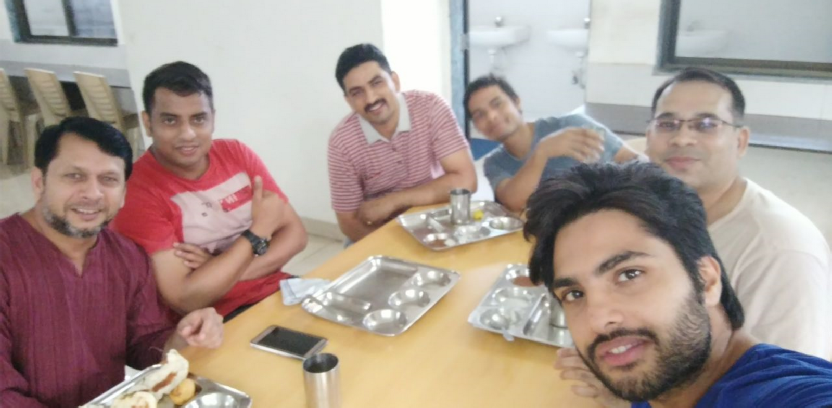
Guess which 10-
He gave me his theory of life for some five minutes -
Some of the same guys in the hallway outside my cell.
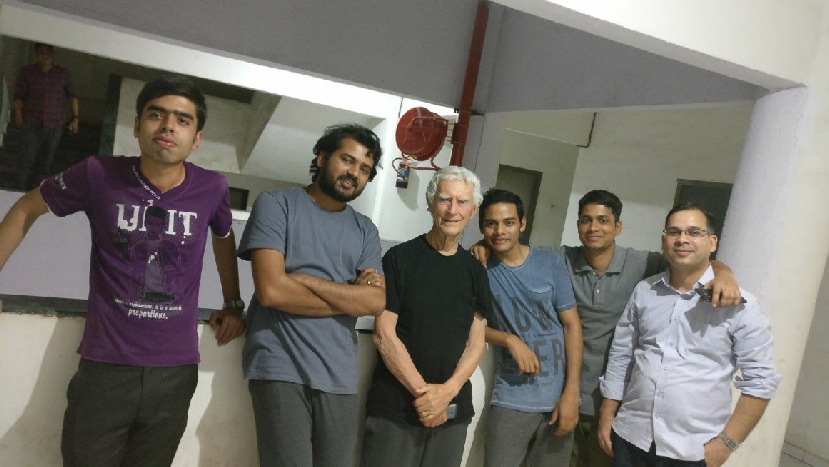
These chaps invited me to sign up for their What’s App group called The Art of Living (after Guruji’s basic text). They send each other things like this:

I’ll finish off with some shots of my cell. These were taken on the last day, when we had our things back, so it is not as bare as normally it was.

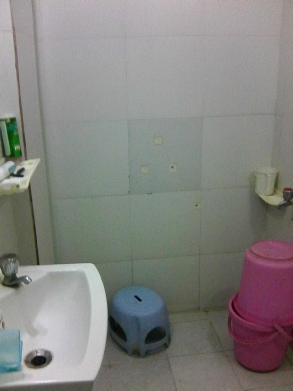
An interesting sidelight now. Bathrooms. I had already noticed that – in the cold but clean restaurant along the road up to Great Oak Manor – so, like this:

– the bathroom was quite clean, but there was no toilet paper. OK, I’ve shifted the continuation of this topic off to a separate page, here. You don’t need to follow that link.
So now we can end on a more appealing note. The perfect family in the back two seats of the car as Raju drives us to school in the morning. 4.2 miles in 45 minutes.
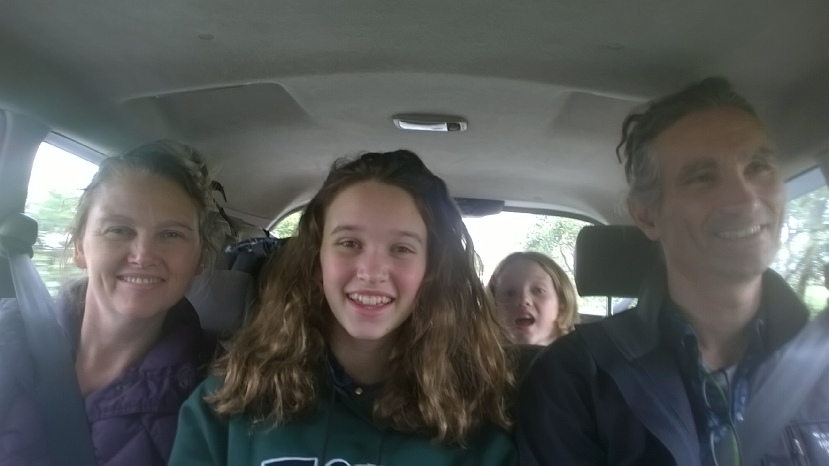
Margaret Patterson, Katie Krieckhaus Patterson, Kyle Patterson Krieckhaus, and Eric Krieckhaus.
Thank you guys for being such a wonderful, happy, loving family for me to be part of.
| GOENKA - The Art of Living (commented) |
| GOENKA - The Art of Living (commented) |
